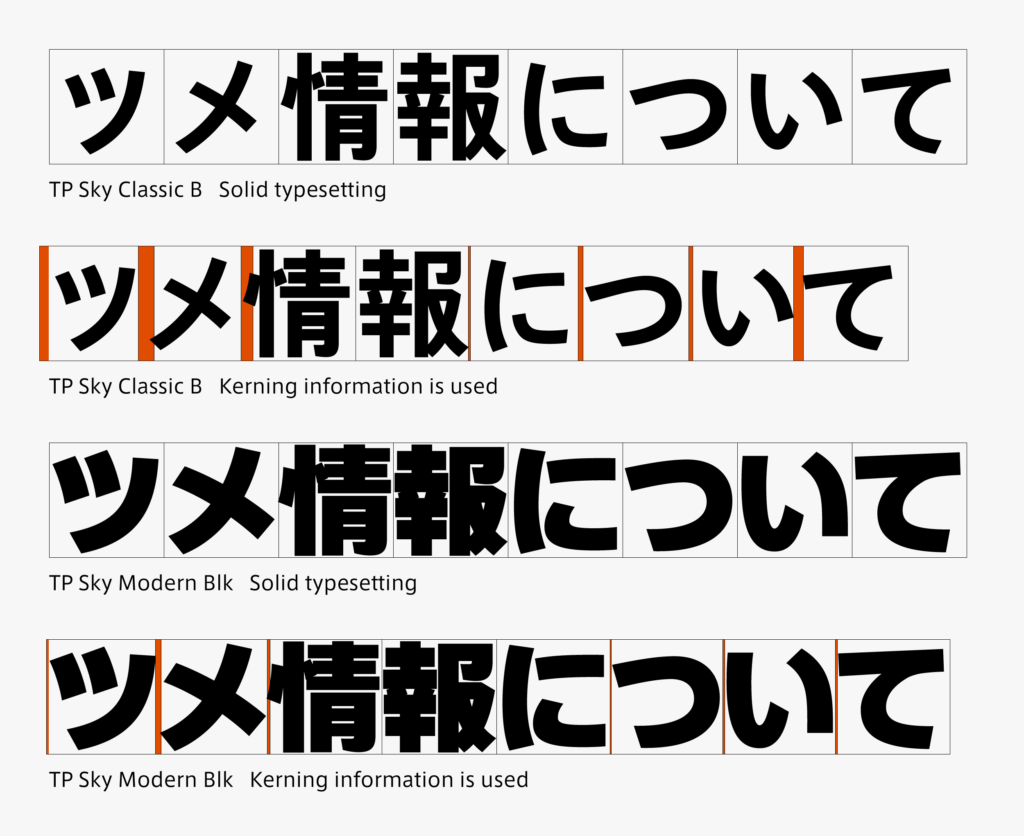It is a basic requisite to design any Japanese character in an imaginary body of the same size. However, there may be dispersion in the space between characters at the time of typesetting, as the shape of each character is different. To restrain dispersion like this, the kerning information is entered for each character and combination of characters. As kana in particular is frequently used and it tends to have differences in each shape, the kerning information is entered thoroughly. On the other hand, kanji has a huge number of characters and the usage frequency varies, so in many cases less kerning information is entered. Of course, there is also a difference in each kanji shape, but there is tendency to generate a silhouette with the awareness of type face frame as design for font.
Also, the character to be entered with the kerning information and numerical value differs depending on the font. Classic and Modern Blk of TP Sky is a contrasting example. The kerning information is somewhat larger for Classic, as its type face is smaller and kana is also closer to kana-specific shape. On the other hand, the kerning information is somewhat lower for Modern, as its type face is large and a silhouette is generated for each character. “Solid typesetting,” in which the characters are lined up without narrowing or widening the space between imaginary bodies, is actively used in Japanese typesetting. Character design without relying on kerning information is also an important point.

(T.I)
Series archive Japanese Type Design / Designing Kanji, Hiragana, and Katakana
- Designing Kanji, Hiragana, and Katakana 06: “Kerning Information”
- Designing Kanji, Hiragana, and Katakana 05: “Consistency”
- Designing Kanji, Hiragana, and Katakana 04: “Elements”
- Designing Kanji, Hiragana, and Katakana 03: “Thickness”
- Designing Kanji, Hiragana, and Katakana 02: “Type Face”
- Designing Kanji, Hiragana, and Katakana 01: “Structure”